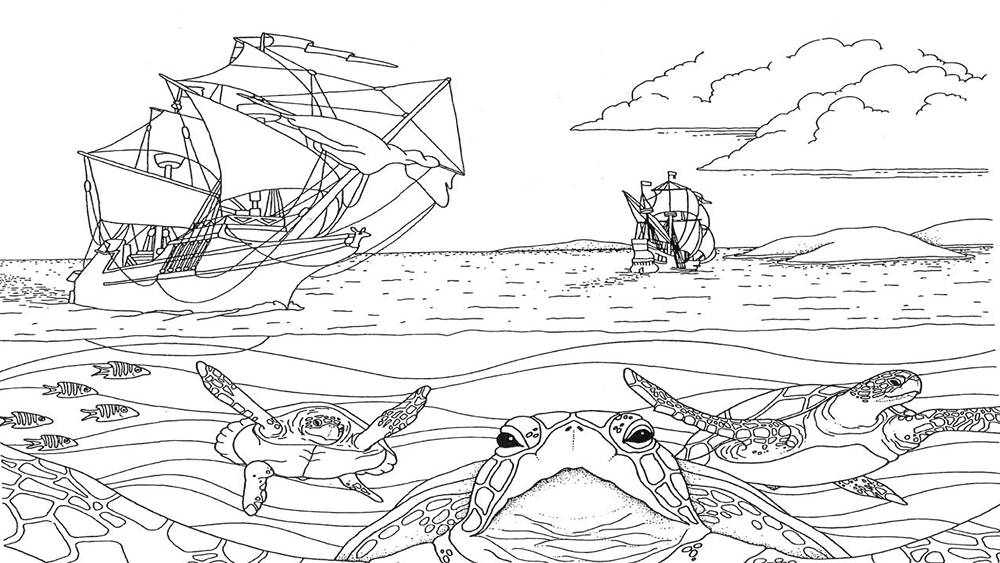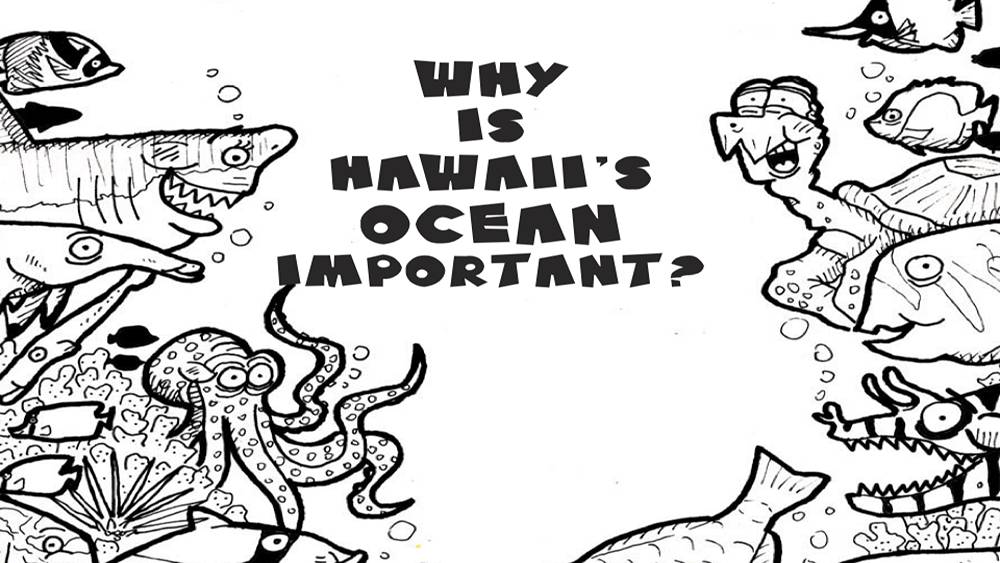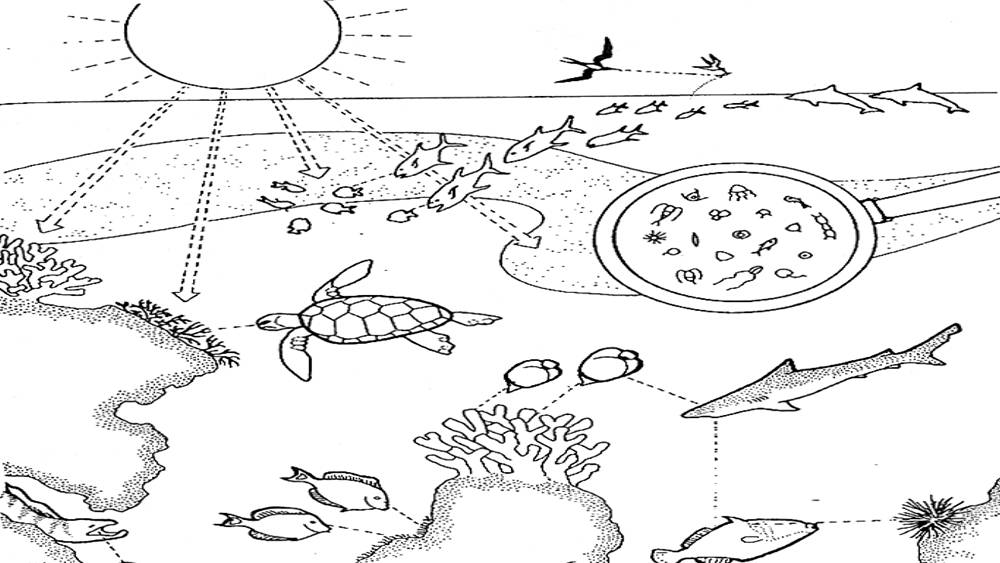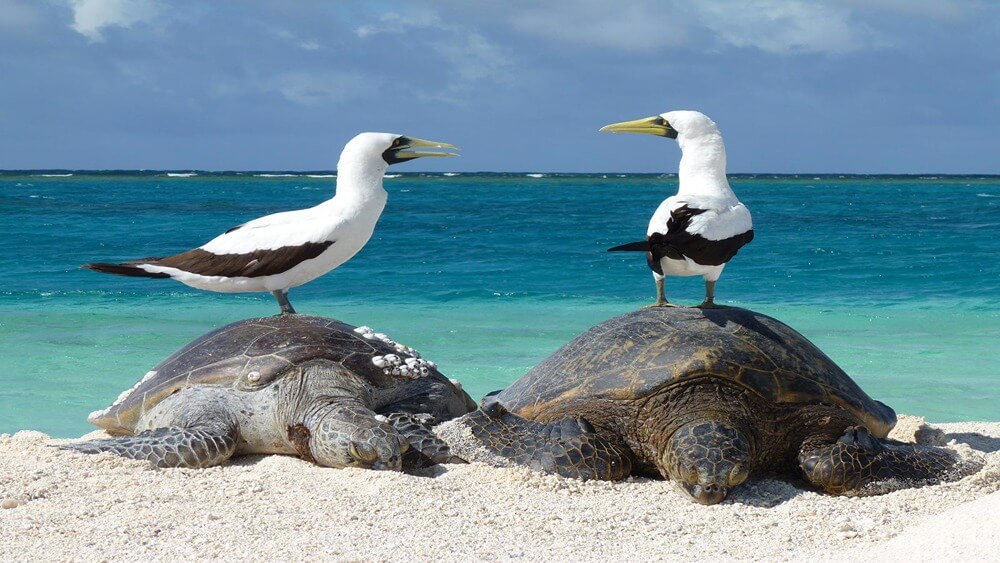Utilize these interactive lesson plans and activities with students to learn and gain a better understanding of sea turtles, their impacts, and the role sanctuaries have in protecting these species.

Hawaiian Islands Humpback Whale National Marine Sanctuary VR Lesson
Students will explore the ecology of one of three different species in Hawaiian Islands Humpback Whale National Marine Sanctuary. They will also explore conservation measures in place for their species protection. Students will produce a tri-fold brochure meant to teach visitors of the sanctuary about the ecology of their assigned species and its importance to Native Hawaiian culture.

Sea Turtles Coloring Page
Students can utilize this coloring page that features green, hawksbill, Kemp’s ridley, leatherback, loggerhead, and olive ridley sea turtles that are all found in U.S. waters. These six turtle species are protected by the Endangered Species Act.

Sea Turtles, No Nā Honu Kai: A Coloring Book in English and Hawaiian
Sea turtles figure prominently in native Hawaiian life. You can learn more about Hawaiian sea turtles by reading this book and coloring the pictures. This coloring book is also available in Japanese and Samoan language.

Why is Hawaii’s ocean important? A Keiki (kids) Activity Book
This interactive book offers students the opportunity to learn about the importance of the marine ecosystem in Hawaii, including key species like sea turtles and whales, through coloring, word searches, games, hands-on activities, and more.

A Journey Through Papahānaumokuākea
Students can travel through the islands and atolls of Papahānaumokuākea with this activity book.

School & Field Activities in Hawai`i
Hawaiian Islands Humpback Whale National Marine Sanctuary promotes hands-on, experience- based marine education. Classes include a variety of activities, lectures, creative hands-on activities and in-the-field experiences. Each visit will feature a whale activity and one or two other topics. Teachers may request topics other than those listed in their grade levels.

Sea Creatures in Hawai`i
A matching game to learn about the species that make up the biodiverse ecosystem of Hawaiian Islands Humpback Whale National Marine Sanctuary, including sea turtles.

Northwestern Hawaiian Islands Coloring Page
A coloring page of a biodiverse coral reef ecosystem with sea turtles, fish, and more in the Northwestern Hawaiian Islands.

Sea Turtle Exploration Document
Utilize curated resources from NOAA and other groups to discover more about the Green Sea Turtle species.

Lesson: Tracking Marine Animals—Species Research, Migration Mapping, and Ecosystem Dioramas
A lesson plan for students to be able to describe the habitat and behaviors of a particular marine animal species, understand that marine animals migrate in search of food and appropriate breeding grounds throughout the year and that scientists are interested in tracking the movements of marine animals to study the effects of environmental changes on their behavior, and plot the locations of animals on a map based on satellite tracking data.

Species on the Edge
The focus of this lesson plan is on endangered sea turtle species. Students should be able to describe the factors negatively affecting populations of sea turtles and will identify and discuss action that can be undertaken to reduce or eliminate threats to sea turtles through the lesson.

